MARIANI’S
Virtual
Gourmet
September 10, 2017
NEWSLETTER

❖❖❖
IN THIS ISSUE
WHAT'S WONDERFUL
IN PARIS RIGHT NOW
By John Mariani
NEW YORK CORNER
SWAGAT and ENTHAICE
By John Mariani
NOTES FROM THE WINE CELLAR
LA DOLCE VARIETÀ OF
ITALIAN WINES
By John Mariani
❖❖❖
WHAT'S WONDERFUL IN PARIS RIGHT NOW
By John Mariani
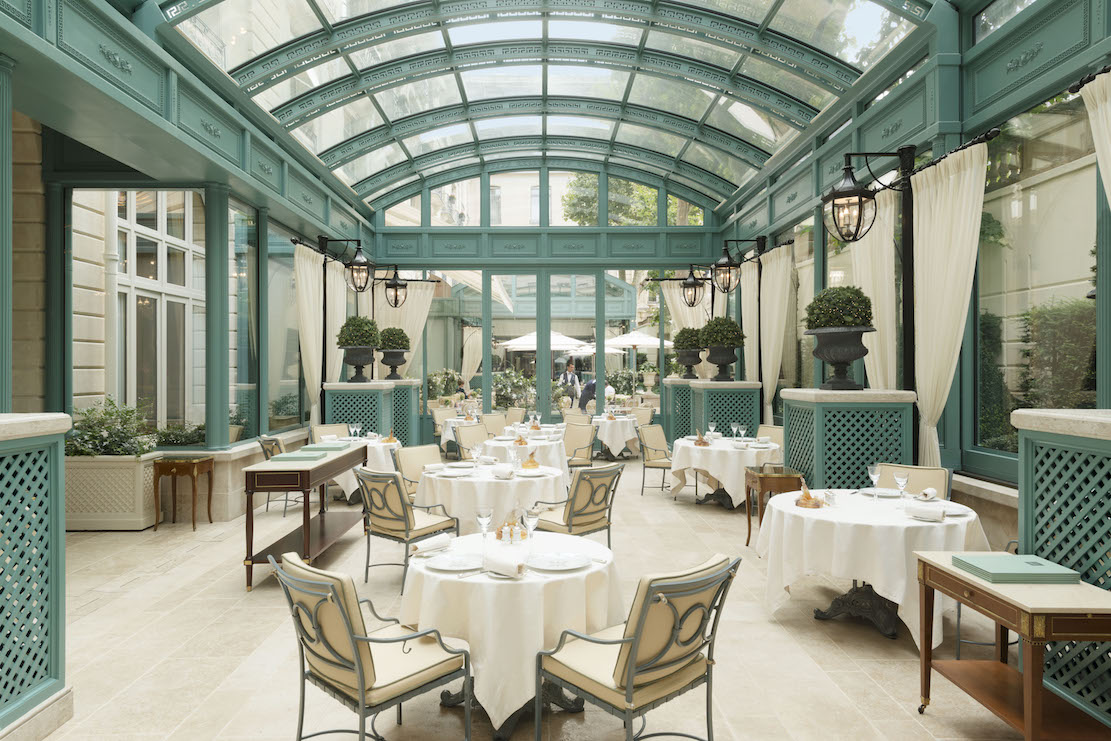
Les Jardins de 'Éspadon
photo Vincent Leroux
Like all great cities,
restaurants change with the seasons, and Paris is
not immune to turnover, which brightens the
gastronomic landscape with new young chefs doing
new young things in their kitchens.
More than most cities, Paris
is bound to revered culinary traditions, so that
some of its most endearing pleasures are to return
to a favorite old bistro that might very well date
back to when Jean-Paul Sartre and James Joyce
dined there.
But to stay in synch with the innovations
of global gastronomy, Paris’s established
restaurants have had to re-think their style
without losing their unique spirit, not least in
established hotels.
For, if a leopard cannot change its spots,
it can certainly gain in focus as it grows older. Here,
based on a trip this summer, are favorite spots
that show off such change in the City of Lights.
(Remember, in France, tax and
service are included in the bill.)
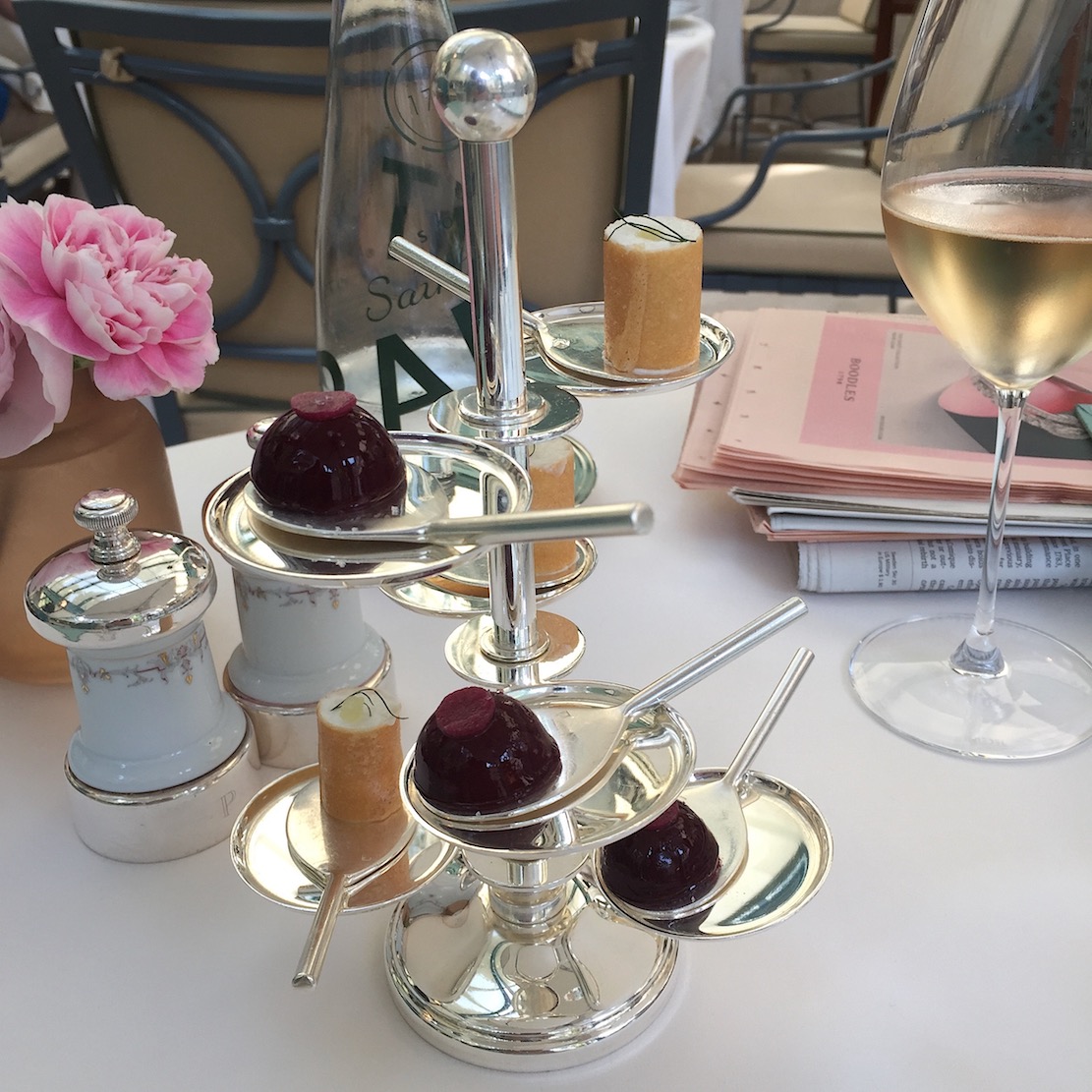
LE
JARDINS DE L’ÉSPADON
The Ritz Paris
15 Place Vendôme
1-33-1-43-16-3030
The fame of The Ritz has
been spread as much by American writers like
Hemingway (right)
and Fitzgerald as by Hollywood movies like “Love in
the Afternoon” with Gary Cooper and Audrey Hepburn.
Its client list, since opening on the Place Vendȏme
in 1898 under César Ritz, has included everyone of
importance in European society, from Marcel Proust
to Coco Chanel.
Princess Diana had the last meal of her short
life at The Ritz
before her fatal accident.
The Ritz
before her fatal accident.
Many regular visitors would have
been happy had the Ritz never changed anything at
all—it even stayed open during World War II—but
owner Mohammud Al Fayed knew that the time had come
to upgrade every inch of the hotel and restaurants
without altering the overall elegance of the huge
space. He
closed it in 2012, not re-opening until 2016, after
designer Thierry Déspont renovated everything from
top to bottom, rooms to restaurants, banquet rooms
to spas. On
the Rue Cambon side of the hotel, guests can enjoy a
drink or an informal meal at the new Ritz Bar, and
everyone is cheering that the Bar Hemingway is
back in business under the eye of veteran bartender
Colin Field (below).
 Within months its fine dining L’Éspadon Restaurant garnered
two Michelin stars and the adjacent, more casual Les Jardins de
L’Éspadon received one. It was at the
latter that I had lunch this summer with the man
whose opinion on all things Parisian I most respect,
Alexander Lobrano, an American ex-pat who writes the
most insightful reports on what’s going on in town.
Within months its fine dining L’Éspadon Restaurant garnered
two Michelin stars and the adjacent, more casual Les Jardins de
L’Éspadon received one. It was at the
latter that I had lunch this summer with the man
whose opinion on all things Parisian I most respect,
Alexander Lobrano, an American ex-pat who writes the
most insightful reports on what’s going on in town.
Within the airy atmosphere of the
sunny orangerie-style room we left ourselves in the
hands of Chef Nicholas Sale (the tenth in The Ritz’s
history) and sommelier Estelle Touzet, who poured us
glasses of Bollinger Rosé Champagne to go with the
starter of cooked and raw radishes. We asked
Sale to prepare two different four-course meals so
that we could try more dishes.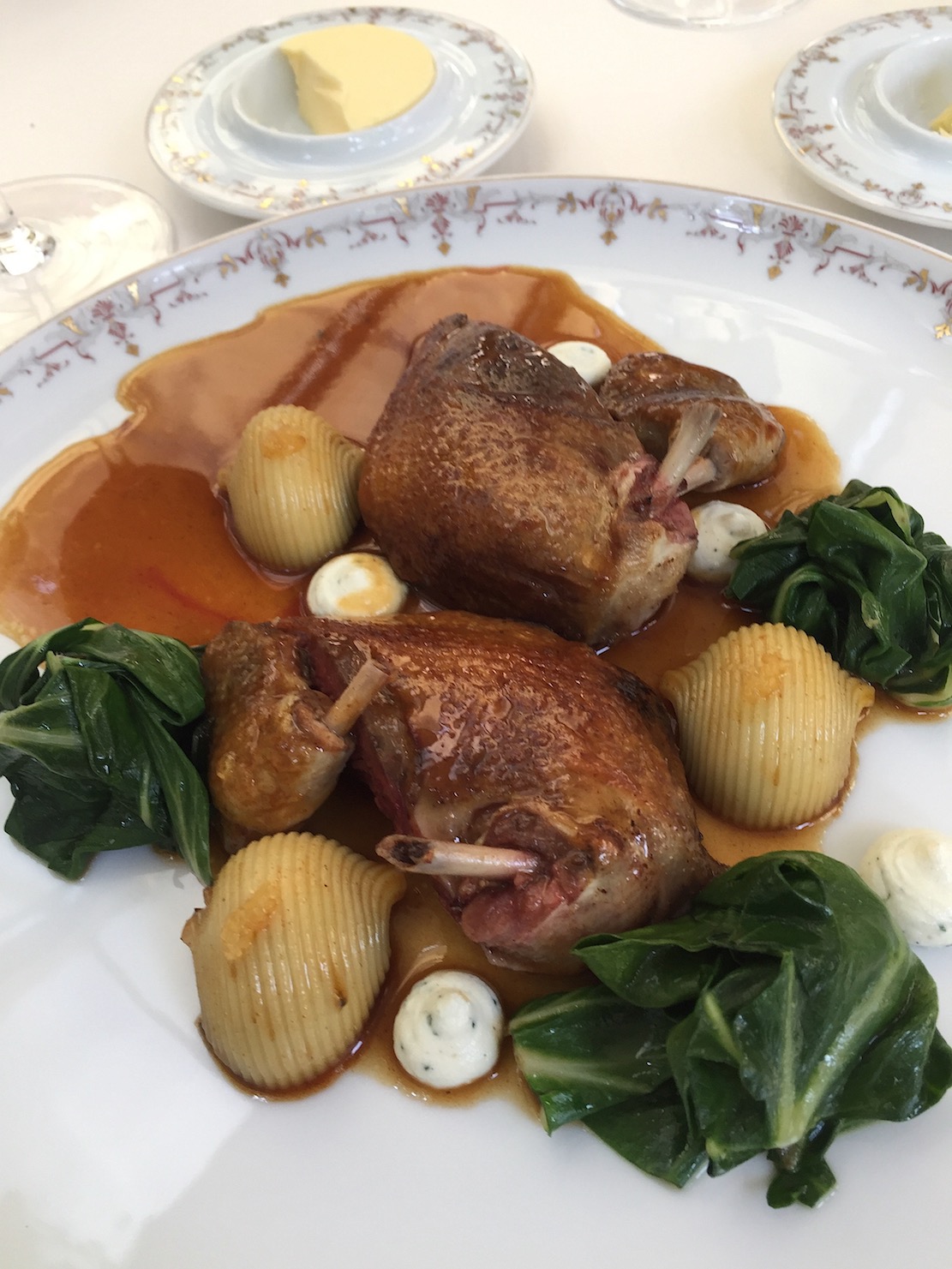
The dishes at Les Jardins are
lighter and less complex than those at the formal
L’Éspadon dining room but no less savory for that.
Green peas of the sweetest variety were combined
with an onion mousse studded with veal bacon bits,
while a snowy filet of whiting came with potato
cream given an acidic brightness by capers and
lemon.
French
chefs for years now have felt it incumbent to add a
pasta dish to their menus, and at The Ritz, 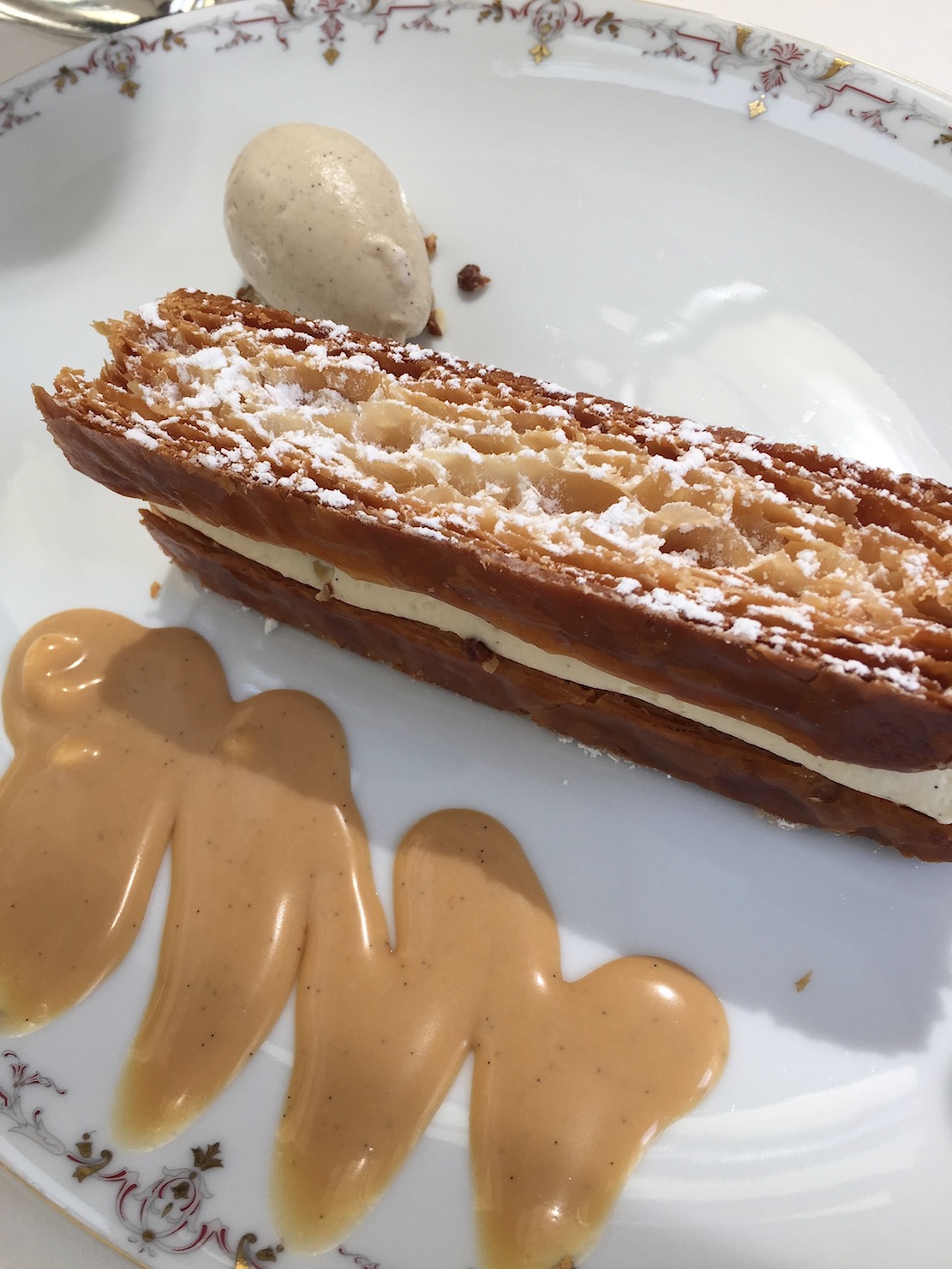 with
a delicious Domaine Gavoty Clarendon 2015, we
enjoyed cannelloni stuffed with langoustines, with
green cabbage and a sauce reduced with Meursault
that Sale claims as his signature dish.
with
a delicious Domaine Gavoty Clarendon 2015, we
enjoyed cannelloni stuffed with langoustines, with
green cabbage and a sauce reduced with Meursault
that Sale claims as his signature dish.
Roasted breast of squab (right) came
with more pasta, Swiss chard and ricotta, the pigeon
supremely tender and lightly gamey, the chard bitter
and the ricotta sweet and creamy. With this
we drank a perfect match-up wine—a Domaine Stéphane
Ogier Côte Rotie 2014. A selection of impeccably aged
cheeses came next, with a 10-year-old Sercial
Madeira, and to finish off was a glazed yuzu lemon
meringue with rice pudding and citrus pearls, which,
to our surprise, was served with sake. An
old-fashioned vanilla millefeulle (left) did seem
to have a thousand layers of buttery pastry so light
they seemed to levitate.
Such dishes as these show just
how advanced French cuisine in Paris can be, even in
the staunchly classical Ritz, where time marches on,
but now to a different tune.
A two-course meal at Les Jardins
is €95, three €120, and four €145. In the main
dining room, L’Éspadon, appetizers run, á la carte,
€60-€190, and
main courses €110 to €240.
114 FAUBOURG
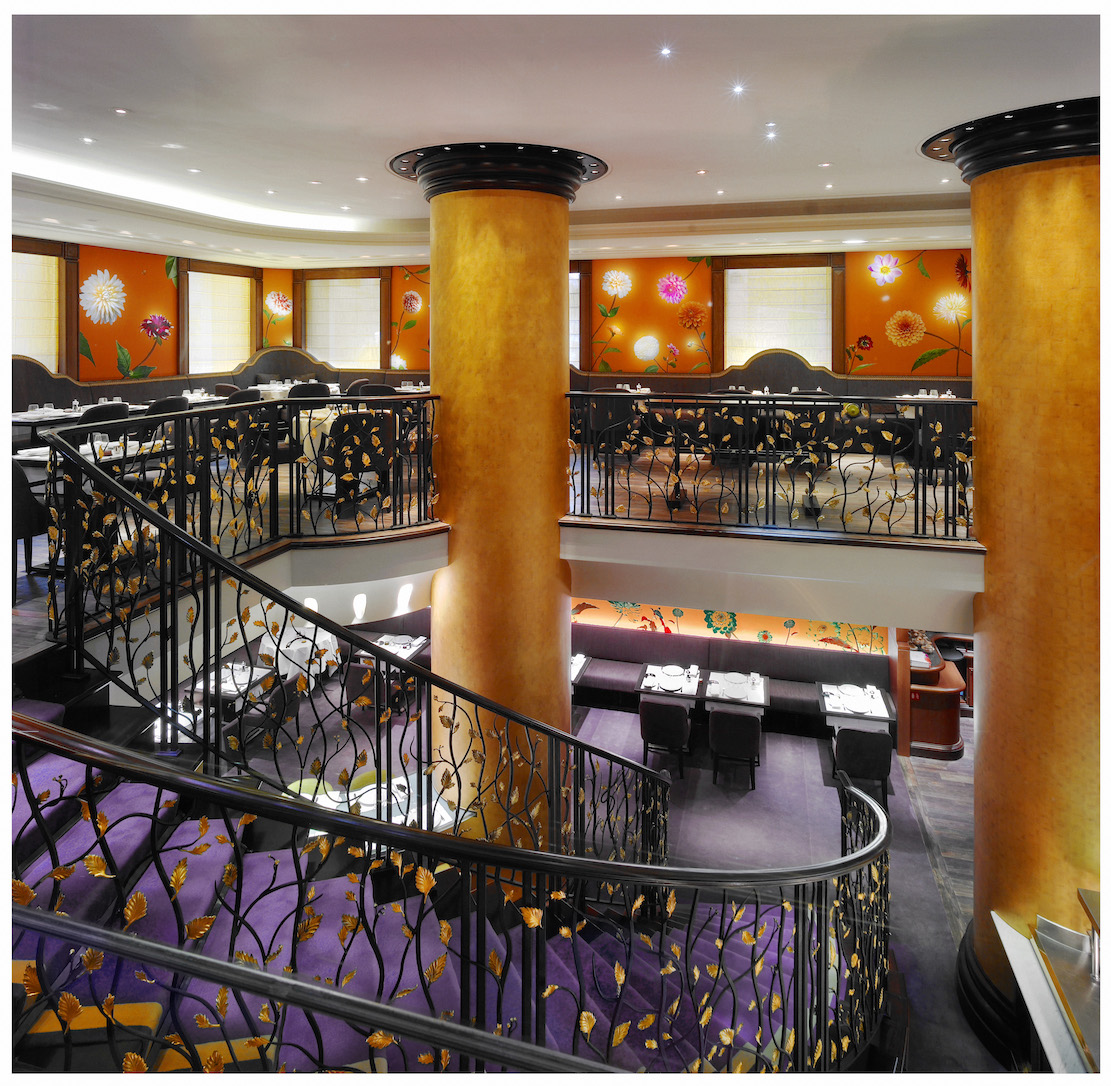
Le Bristol Hotel
114 Rue Faubourg
1-33-1-53-434300
Le
Bristol has long been one of my favorite Paris
hotels, certainly grand but, despite its high
fashion clientele, with an intimacy others of its
ilk miss. Part
of its homey charm is the resident Fa-Raon, the
beautiful white cat who roams the lobby at will and
seems to regard visitors as her own guests.
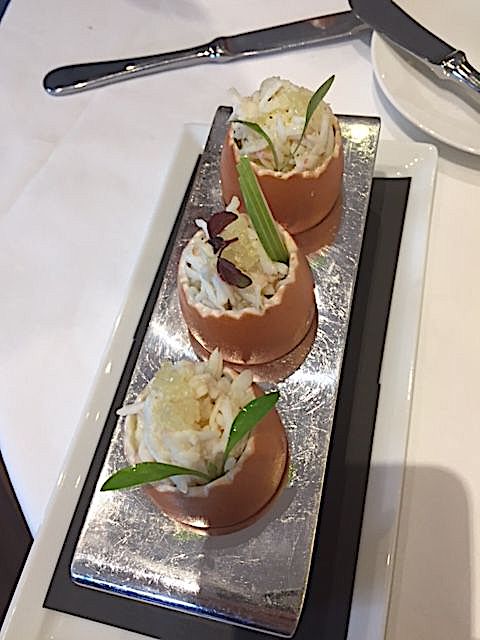 Like all the great
“château” hotels in Paris in this century, Le
Bristol, now part of the Oetker Collection, closed
for extensive rehab, adding a wing. I have written
more than once of my great meals at the hotel’s
deluxe restaurant, Épicure
(three Michelin stars), under Chef Eric Fréchon, who
also oversees the adjacent, far more casual
two-story 114
Faubourg, now seven years old and as bright
and colorful as any in Paris, with its elegant
winding staircase, gilded columns, Matisse-like
murals, and an atmosphere that sets a standard for a
modern Parisian brasserie. Its three-course €56 lunch
menu is one of the real bargains at this level of
cuisine.
Like all the great
“château” hotels in Paris in this century, Le
Bristol, now part of the Oetker Collection, closed
for extensive rehab, adding a wing. I have written
more than once of my great meals at the hotel’s
deluxe restaurant, Épicure
(three Michelin stars), under Chef Eric Fréchon, who
also oversees the adjacent, far more casual
two-story 114
Faubourg, now seven years old and as bright
and colorful as any in Paris, with its elegant
winding staircase, gilded columns, Matisse-like
murals, and an atmosphere that sets a standard for a
modern Parisian brasserie. Its three-course €56 lunch
menu is one of the real bargains at this level of
cuisine.
I asked restaurant manager
Patrice Jeanne to have the chef prepare a lunch for
my friend and me. 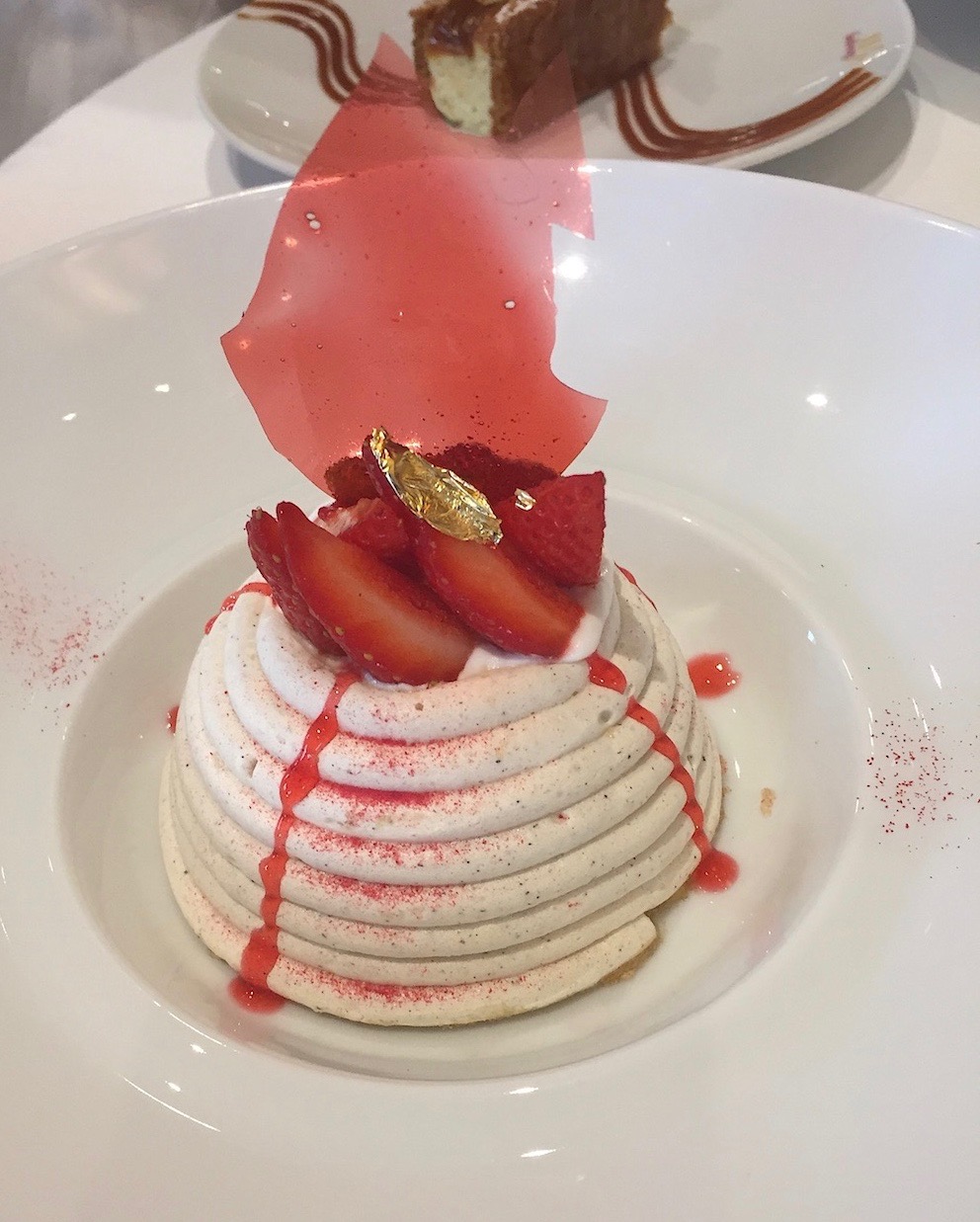 It began
with a lovely presentation of King crab meat in an
eggshell (left)
touched with ginger and lemon mayonnaise, and, since
the white asparagus were in season, we were served
the sweetest in the market. Fat Dover
sole was wonderfully simple in order to best show
off the excellence of the fish, served with spinach
and rich with clarified butter and accompanied by an
exquisite Puligny Montrachet 2010.
It began
with a lovely presentation of King crab meat in an
eggshell (left)
touched with ginger and lemon mayonnaise, and, since
the white asparagus were in season, we were served
the sweetest in the market. Fat Dover
sole was wonderfully simple in order to best show
off the excellence of the fish, served with spinach
and rich with clarified butter and accompanied by an
exquisite Puligny Montrachet 2010.
This was followed by squab,
equally fat and succulent, set in a verbena-laced
broth with asparagus and plump foie gras ravioli.
For dessert there was a classic Australian-inspired
Pavlova with crisp meringue and ripe summer fruits
and a very French vanilla millefeuille laced with
bourbon and sweetened with salted butter caramel.
The pleasure
of 114 Faubourg is in the interplay of color, casual
chic, great cuisine and a true bonhomie that makes
dining there always fresh and new.
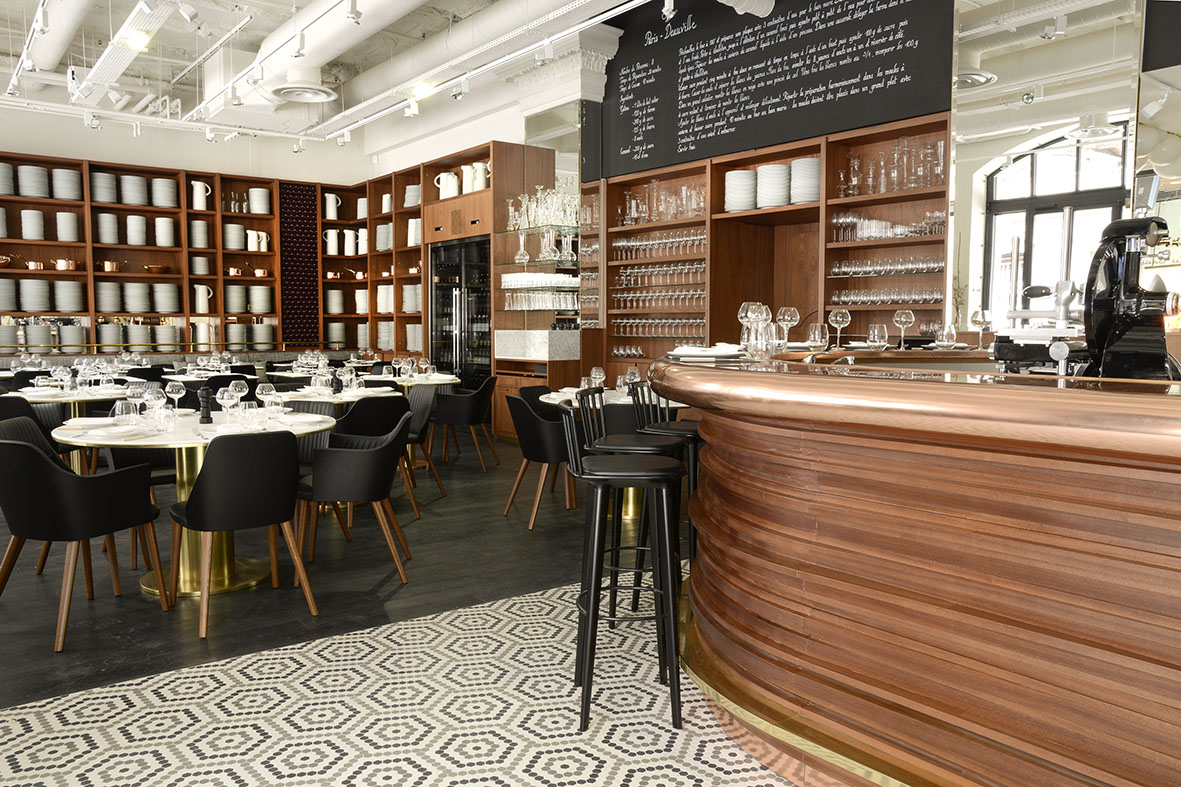 LAZARE
LAZARE
Gare Saint-Lazare
Rue Intérieure
1-33-1-44-90-8080
When I
first visited the city at the age of nineteen, my
very first meal in Paris was at a bistro in the Gare
du Nord, and it made an enormous impression on me,
not just for the food—a big steaming
casserole of blanquette
de veau—but for its atmosphere of such French
vitality within the bustle of the huge train
station.
Those Paris stations have always
had good, solid bistros to service those coming and
going, and Gare Saint-Lazare, one of the largest and
now a commercial center, is now home to one of the
best. Lazare
Paris is the new brasserie opened by Le Bristol’s
Eric Fréchon (see
above), and he has poured his heart into
it. Despite
its location within the vast station lined with
boutiques, newsstands and cafés, Lazare is a
thoroughly modern space, with al fresco access to
the plaza outside.
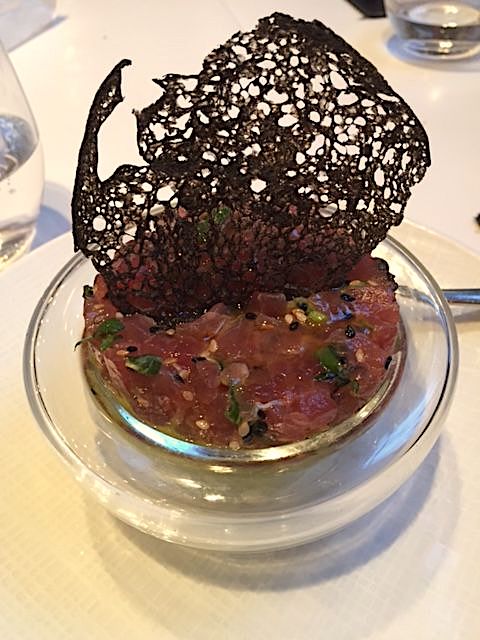 It’s all done
in buffed wood, with tile floors, a white industrial
ceiling, shelves full of white china, very
comfortable gray banquettes and marbleized table
tops. There
is a blackboard menu and a broadsheet whose drinks
and wines are listed on the back, itself
testament that you can order very good regional
bottlings in Paris for well under €50, and apéritifs
cost only six.
It’s all done
in buffed wood, with tile floors, a white industrial
ceiling, shelves full of white china, very
comfortable gray banquettes and marbleized table
tops. There
is a blackboard menu and a broadsheet whose drinks
and wines are listed on the back, itself
testament that you can order very good regional
bottlings in Paris for well under €50, and apéritifs
cost only six.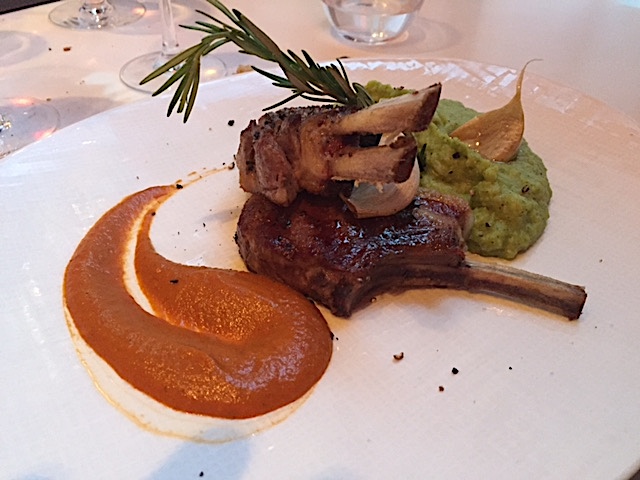
The young, affable staff works
briskly but cordially, ever attentive to just how
much time you have to spend. My
friends and I had the whole evening to enjoy and by
ten o’clock the place was emptying out.
We began with tender calamari cut
like spaghetti and sautéed in olive oil with chorizo
and hot espellette
peppers (€15), and one of the best tuna
tartares (left)
I’ve had in Paris, nestled with sesame-scented
guacamole (€18).
Equally good was a beef tartare, hand chopped
to the perfect size, with pommes pailles,
what we’d call shoestring potatoes (€23), oddly limp
that evening.
A sweet cake of crab came with haricots verts
and mimosa coraille
(€24).
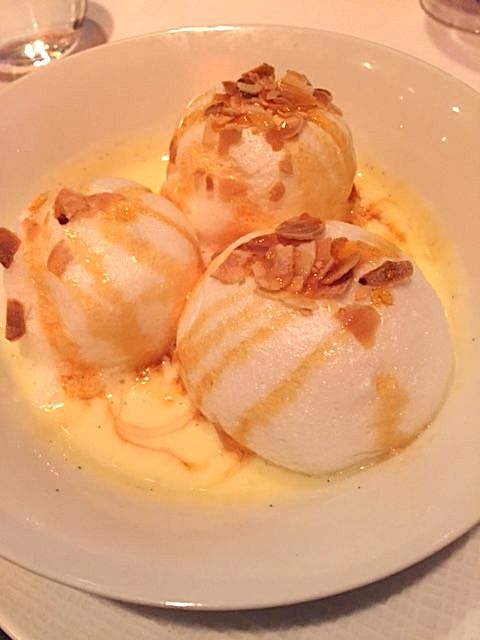 I didn’t care
much for an expensive, soupy risotto with pesto of
girolles mushrooms and arugula (€25). Lamb chops (right) were
grilled to rosy red, perfumed with thyme and sided
with a soft polenta with zucchini and basil (€37).
I didn’t care
much for an expensive, soupy risotto with pesto of
girolles mushrooms and arugula (€25). Lamb chops (right) were
grilled to rosy red, perfumed with thyme and sided
with a soft polenta with zucchini and basil (€37).
In good brasserie fashion there
are daily specials—chicken fricassée on Monday, cold
salmon on Tuesday, roast lamb on Wednesday, and so
on, all at a very easy-going €19 euros.
Desserts
stick close to the established traditions of French
home cooking, from îles flottante
(left) with
dark caramel and toasted almonds (€7) and a
bittersweet chocolate tart (€12) to poached cherries
with pistachios and vanilla ice cream (€13) and puff
pastry profiteroles in a rich chocolate sauce (€9). There
are, of course, a selection of cheeses of artisanal
quality.
In look and style Lazare is a far
cry from the art nouveau bistro in the Gare du Nord
of my salad days, though I hope one day to return to
find Fréchon has added blanquette de veau to his
versatile menu.
Lazare has an all-day menu that
includes an €11 breakfast of coffee or tea, fruit
juice and
tartine or Viennese pastry, as well as a tea
break at €14 with hot beverage, a slice of lemon
cake, a slice of chocolate cake and fruit juice.
❖❖❖
SWAGAT and ENTHAICE
By John Mariani
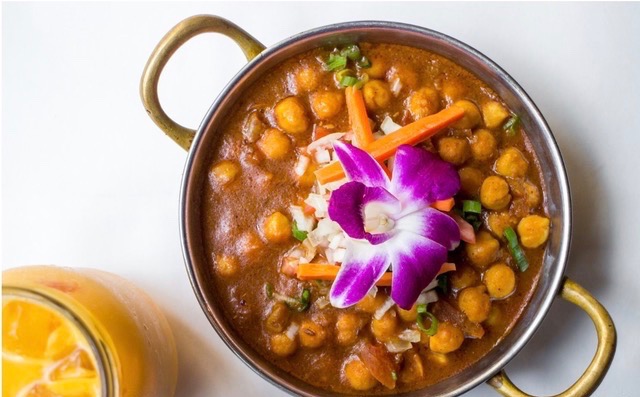
No
American city can claim any longer to be the
best when it comes to Asian restaurants. Houston
can brag about its Vietnamese neighborhoods
teeming with restaurants large and small; Los
Angeles can brag about its Koreatowns and there
are Chinatowns in every major city. But
only New York can claim to be an umbrella city
to so many Asian restaurants in so many
different neighborhoods, from the “Curry Hill”
eateries in Manhattan to the Colombian
storefronts in Jackson Heights.
Two disparate examples of
family-owned spots serving very good food for
very modest prices—one on the Upper West Side,
the other in Astoria—only hint at the offerings
in a city that has 45,681 “eating and drinking
locations” and counting.
SWAGAT
411 Amsterdam Ave (near 80th
St)
212-362-1400
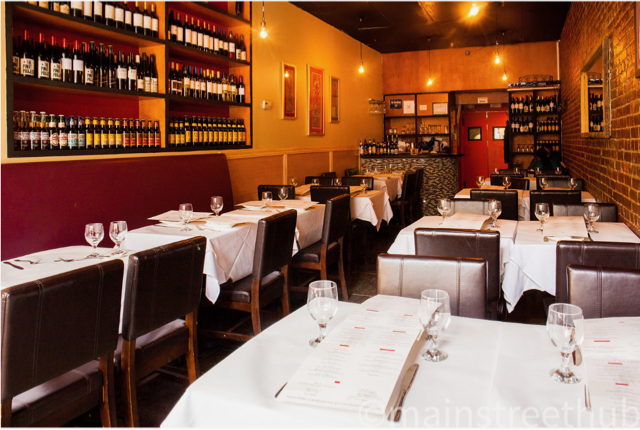 The
word “swagat” is Hindi for welcome, and this
little slip of a restaurant wholly lives up to its
name. The room in slender, the décor minimal—brick
and ocher walls, deep red banquettes and wine
shelves, which hold a very good array of bottlings
that go well with Indian food, whose spices,
rather than heat, are difficult for a wine to
complement.
There are, of course, Indian beers offered.
The
word “swagat” is Hindi for welcome, and this
little slip of a restaurant wholly lives up to its
name. The room in slender, the décor minimal—brick
and ocher walls, deep red banquettes and wine
shelves, which hold a very good array of bottlings
that go well with Indian food, whose spices,
rather than heat, are difficult for a wine to
complement.
There are, of course, Indian beers offered.
The menu is fairly extensive,
with appetizers ($6-$10), soups and salads
($5-$7), tandoori dishes $14-$25), seafood curries
($18), lamb and goat curries ($16), chicken
curries ($15), biryanis and basmati rice ($3-$18)
and vegetarian curries ($13), which is not easy
for a small kitchen to handle, but overall I found
the various dishes distinctive, without the kind
of overlapping curry sauces in so many dishes that
end up tasting the same.
Begin with Aloo Papri Chat,
flour crispies topped with potatoes, chickpeas,
flour straws and mint, yogurt and tamarind sauces,
or 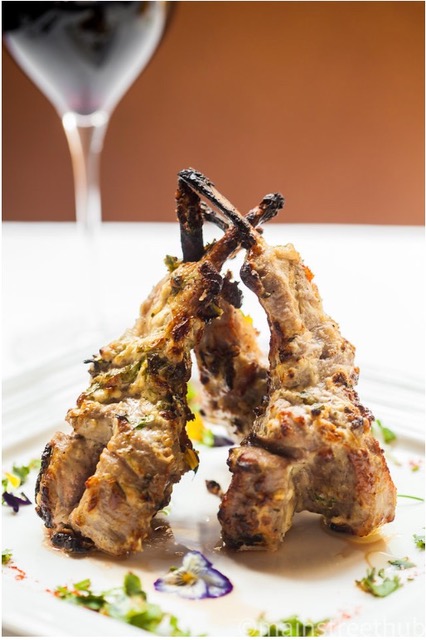 the samosas (lamb
or vegetable).
Lasuni
gobi is a dish of tender cauliflower
carefully fried and tossed with a garlic-tomato
sauce, and shrimp balchao involves mustard seeds
and curry leaves for a tangy but mild flavor.
Shrimp figures in six more dishes, with only two
other seafood items on the menu, which tells you
something.
the samosas (lamb
or vegetable).
Lasuni
gobi is a dish of tender cauliflower
carefully fried and tossed with a garlic-tomato
sauce, and shrimp balchao involves mustard seeds
and curry leaves for a tangy but mild flavor.
Shrimp figures in six more dishes, with only two
other seafood items on the menu, which tells you
something.
So often vegetable dishes are
the best ones on an Indian menu, and Swagat’s
certainly are, including a luscious and rich
channa masala made of chickpeas entwined in sweet
onions, tomatoes and ground spices, and anything
with eggplant, like the Hyderabad bhangare nainagu baby
eggplant stuffed with spices and simmered in
coconut milk.
Still you’ll be happy with the
Adrak lamb chops marinated in red wine and yogurt
and fragrant with cinnamon (right). I
found the chicken kebabs of all white meat bland
by comparison. The breads are addictive at Swagat,
especially the naan not just flavored with garlic
but stuffed with it.
Desserts are run of the mill.
Swagat
is part of the movement to serve Indian street
food, which has always been where the good stuff
is, and at the prices charged, you can pick and
choose and share with abandon.
ENTHAICE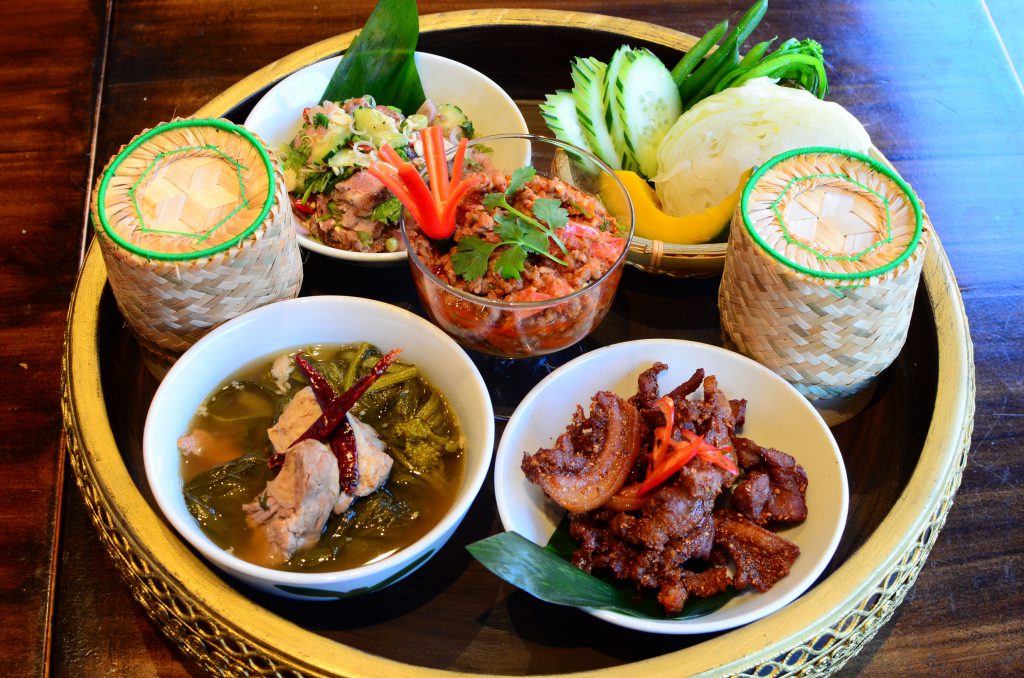
3320 31st Ave (near 34th St)
Astoria, Queens
718-932-1111
Think
about the name Enthaice a moment and it will come
to you: “Thai” fits snugly into a misspelling of a
word for temptation. Now four years old, Enthaice Thai
Kitchen has found the favor of its Queens
neighborhood, and its reputation deserves to grow
beyond.
Unlike the more famous
SriPraPhai in nearby Woodside (with another in
Manhattan), which is huge and packs people in,
Enthaice is a quieter, more cordial spot in
Astoria, run by two sisters who hail from Northern
Thailand and feature the cooking of Chiang Mai and
Phayao. (For
reasons I don’t care to know, the manager would
not give me their names.) As at Enthaice’s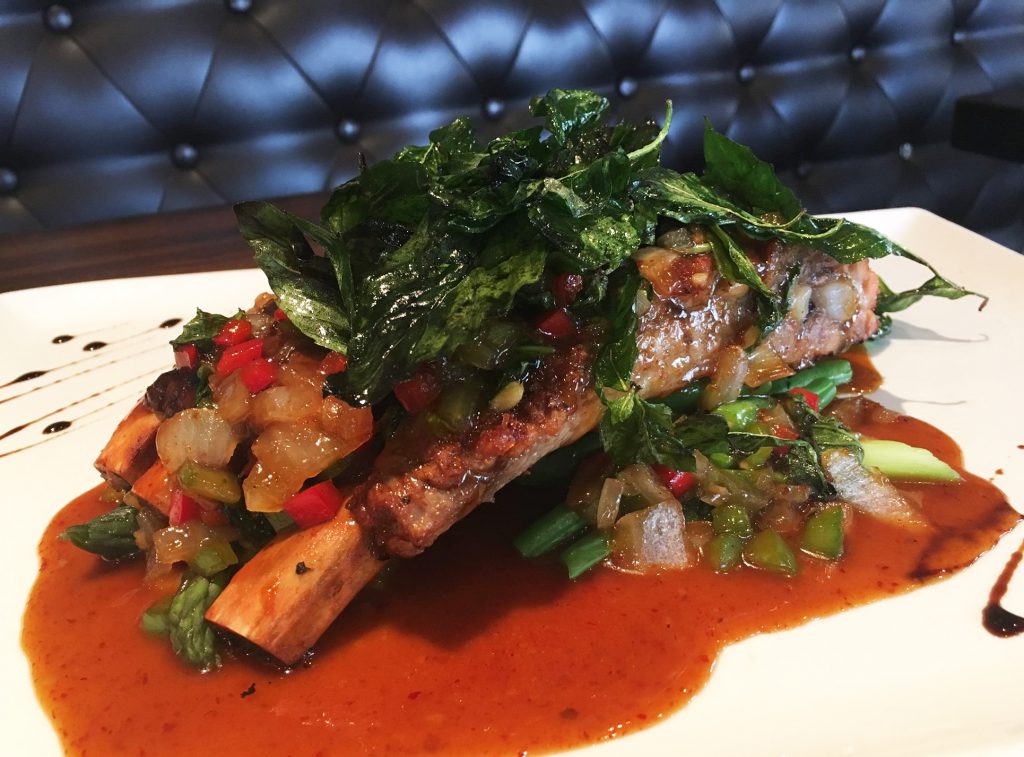 competitors, the menu
is far longer than it should be to insure
consistency in every dish, so I tried to stick to
the chef’s specialties as listed.
competitors, the menu
is far longer than it should be to insure
consistency in every dish, so I tried to stick to
the chef’s specialties as listed.
These included
“yum & yum” items (which has a double meaning
of being yummy as well as a reference to hot Asian
women), like tum yum shrimp
in an aromatic broth with crushed red chilies ($6.95),
and yum ped,
a crispy duck salad tossed with red onion,
pineapple and spicy lime dressing ($14.95).
You can skip the crab Rangoon
puffs made with imitation crabmeat 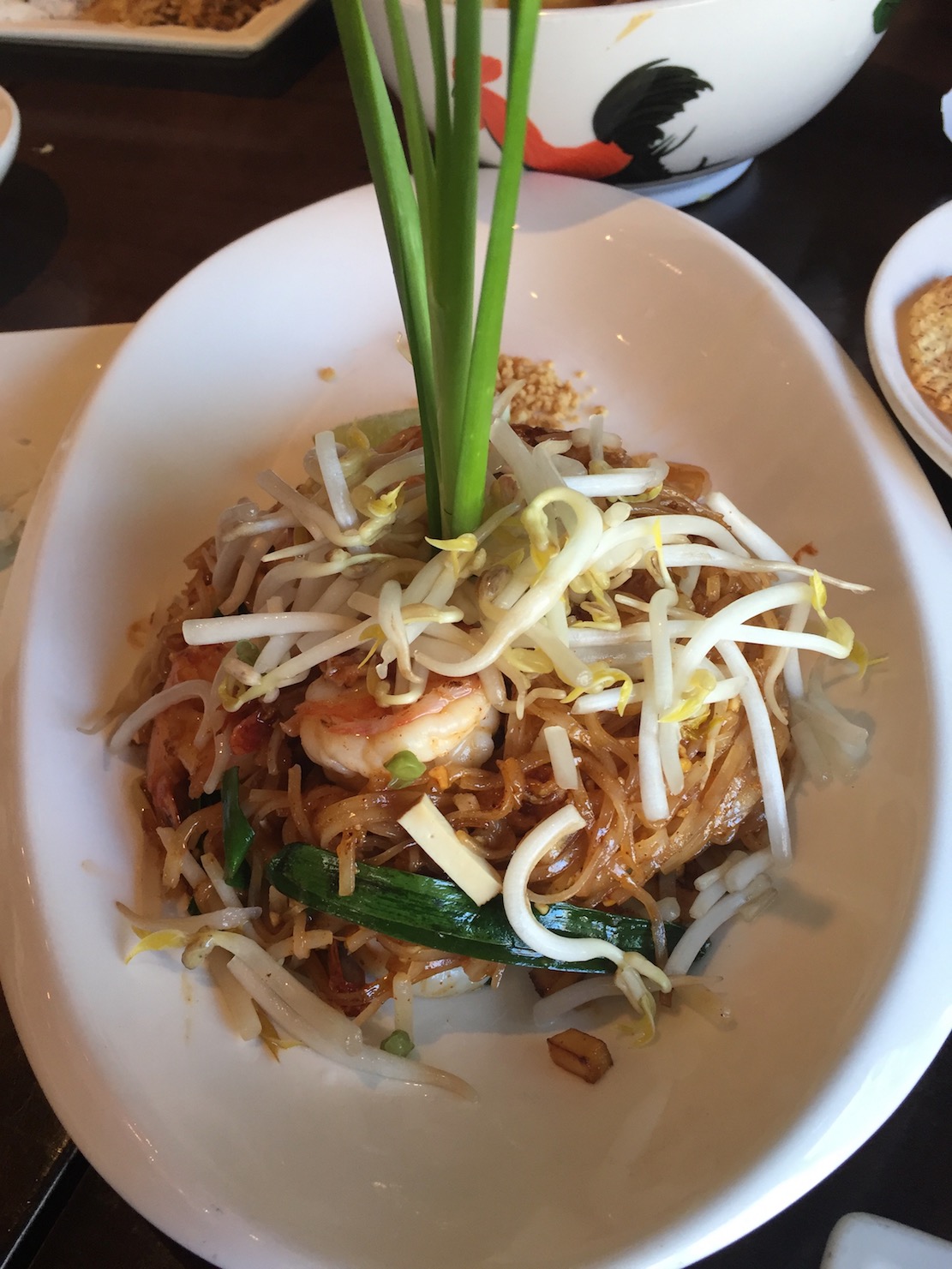 (not unusual in Thai restaurants);
instead order the BBQ ribs on a bed of string
beans with a tamarind glaze (left). “Mango
fish” is a delightful crispy red snapper with red
onion, scallion, cilantro, chili paste, cashews
and spicy mango salad ($27.95), easily shared by
two or more.
And if you like things spicy, the masaman
curry with potato, peanut and fried shallots in
coconut milk will satisfy your cravings. There is,
of course, pad
Thai (right),
a dish always pretty good but rarely wonderful,
and Enthaice’s falls somewhere in between. Tom yum
fried rice is rather dull.
(not unusual in Thai restaurants);
instead order the BBQ ribs on a bed of string
beans with a tamarind glaze (left). “Mango
fish” is a delightful crispy red snapper with red
onion, scallion, cilantro, chili paste, cashews
and spicy mango salad ($27.95), easily shared by
two or more.
And if you like things spicy, the masaman
curry with potato, peanut and fried shallots in
coconut milk will satisfy your cravings. There is,
of course, pad
Thai (right),
a dish always pretty good but rarely wonderful,
and Enthaice’s falls somewhere in between. Tom yum
fried rice is rather dull.
Enthaice
is a pleasant-looking corner restaurant with the
inevitable brick walls and bare wooden tables. Nice
touches include flowers on those tables and a
colorful Chihuly-style chandelier cobbled together
from coffee cups, glasses and creamers. The
service is extremely cordial and helpful, and
Enthaice does a very brisk take-out business.
Open daily for lunch and dinner.
❖❖❖
LA DOLCE VARIETÀ OF ITALIAN WINES
By John Mariani
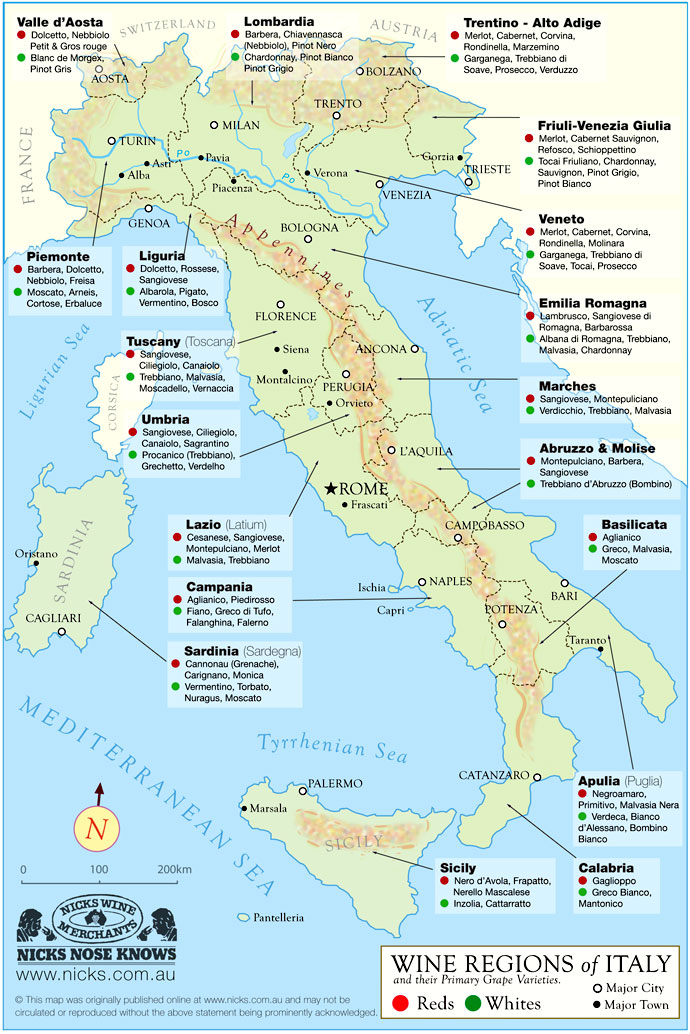
It’s
reasonable enough to expect that someone
with my last name and background might tend
to favor Italian wines, but there are
actually many reasons for that, none purely
nostalgic.
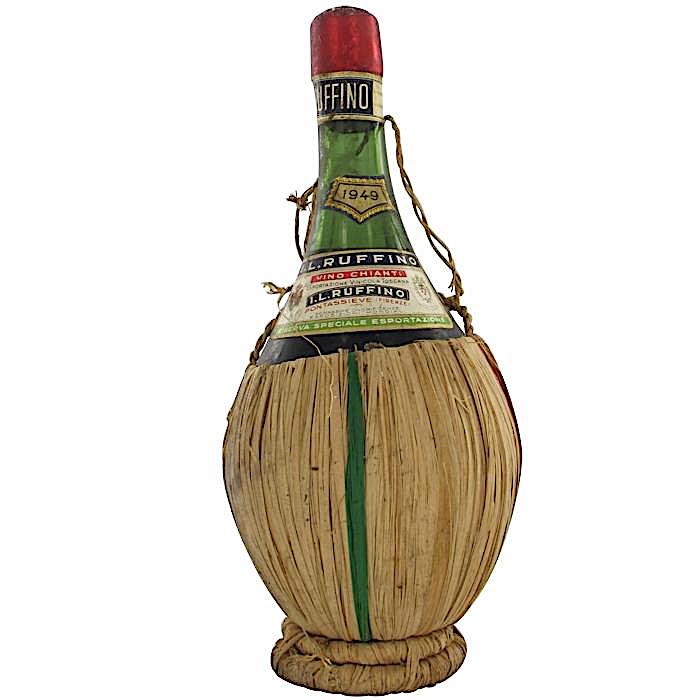 Not
that much wine was drunk by my parents while I was
growing up, and when they did it was likely to be
a straw-covered bottle of Ruffino Chianti. My own
first interest in wine ran more to Mateus and
Lancers Rosé on a date, graduating to French
bottlings, which back in the late Sixties were
amazingly cheap: A friend of mine and I splurged
one day on a bottle of Lafite-Rothschild, pooling
our resources to come up with $7.50.
Not
that much wine was drunk by my parents while I was
growing up, and when they did it was likely to be
a straw-covered bottle of Ruffino Chianti. My own
first interest in wine ran more to Mateus and
Lancers Rosé on a date, graduating to French
bottlings, which back in the late Sixties were
amazingly cheap: A friend of mine and I splurged
one day on a bottle of Lafite-Rothschild, pooling
our resources to come up with $7.50.
It was really only after my
first wine-based trip to Italy in the mid-1970s
that I discovered how delicious Italian wines
could be—at least the reds back then—and
afterwards how much variety there was among the
regions. At
the time American wine aficionados were only
starting to hear about and getting hold of fine
wines like Barolo, Barbaresco, Amarone della
Valpolicella and Brunello di Montalcino. Chianti’s
own
image rose with the establishment of the Chianti
Classico Consorizio, and the Italian government
came up with regulations that tried to sort out
what grapes from what region were in what wines,
under the D.O.C. and D.O.C.G. appellations of
origin.
Later on those regulations
became far too generous in ranking many mediocre
regional wines of high quality while not allowing
innovators like Angelo Gaja, Piero Antinori and
others to add less familiar or less traditional
varietals, like Cabernet Sauvignon and Chardonnay,
to their wines, which had to be labeled mere
I.G.T—indication of geographic typicality.
By the 1990s the huge,
once-backward cooperatives of Sicily and the South
began converting to state-of-the-art technology
that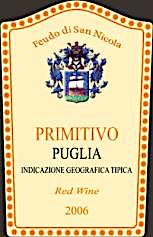 made their wines
fresher, finer and able to compete in the global
market, while at the same time white varietals
like Trebbiano d’Abruzzo, Soave, Arneis, and
others improved to the point of being stocked in
the finest Italian restaurants in Italy and
America.
made their wines
fresher, finer and able to compete in the global
market, while at the same time white varietals
like Trebbiano d’Abruzzo, Soave, Arneis, and
others improved to the point of being stocked in
the finest Italian restaurants in Italy and
America.
So, when I say that I favor
Italian wines, I am not admitting bias but instead
championing the very variety of good wines that
Italy now produces.
Twenty years ago I would never have sung
high praises of wines like Sagrantino di
Montefalco, Barbera d’Alba, Lambrusco, Coda di
Volpe, Verdicchio and so many others. Now I
can and will.
By
comparison, no other wine-producing country comes
close to Italy in terms of the number of varietals
cultivated, even though there is some overlap in
names like Pinot Bianco/Pinot Blanc or
Primitivo/Zinfandel. The truth is, once you have
noted the excellence of Bordeaux varietals like
Cabernet Sauvignon, Cabernet Franc, Merlot and
Petite Verdot, and the three workhorses of
Burgundy—Chardonnay, Pinot Noir and Gamay—and a
few more from the Rhône Valley, you start to run
low on wines to talk about beyond a good Alsatian
Gewürztraminer or a Loire Valley Sancerre.
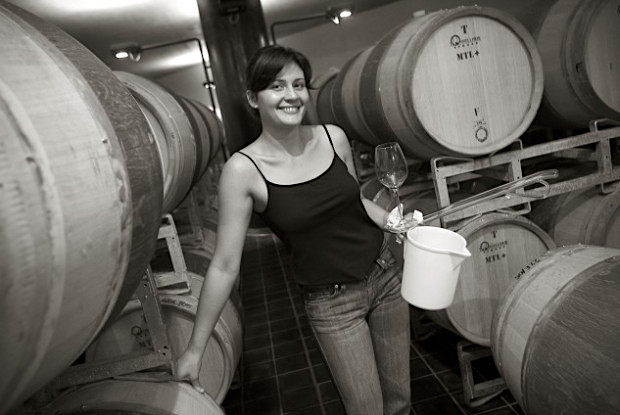 California,
to be sure, is planted with what seems every
imaginable varietal, but beyond the most widely
planted grapes—Chardonnay, Pinot Noir and Cabernet
Sauvignon—most experiments with European varietals
have been disappointing. South Africa does a nice job
with a few local varietals like Pinotage and
Australia is making outstanding Shirazes. Spain
is showing a great deal of progress with
unfamiliar grapes beyond Tempranillo, while South
America is more or less tied into Cabernet
Sauvignon, Carmènére and Malbec. As for
Germany, thank God that He blanketed the valley
with Riesling.
California,
to be sure, is planted with what seems every
imaginable varietal, but beyond the most widely
planted grapes—Chardonnay, Pinot Noir and Cabernet
Sauvignon—most experiments with European varietals
have been disappointing. South Africa does a nice job
with a few local varietals like Pinotage and
Australia is making outstanding Shirazes. Spain
is showing a great deal of progress with
unfamiliar grapes beyond Tempranillo, while South
America is more or less tied into Cabernet
Sauvignon, Carmènére and Malbec. As for
Germany, thank God that He blanketed the valley
with Riesling.
Yet, I could spend pages
writing about scores of Italian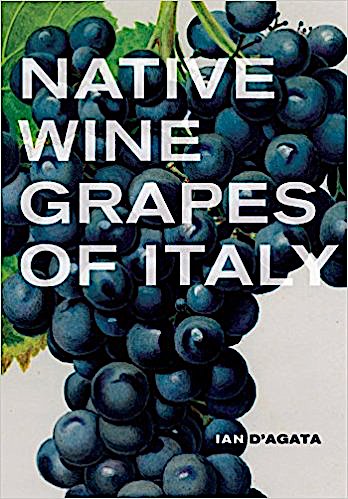 varietals of improved
and stellar quality, made by a second generation
of young vignerons who, with new degrees in
enology, find that experimentation can dispel all
thought that good quality is not to be found in
the soils of Campania, Basilicata, Puglia, Abruzzo
and Sardinia.
Wine makers, not all of them born in Italy,
like Aldo Vajra, Axel Heinz, Cristina Mariani-May
(no relation to this writer), Gaia Gaja (left),
Gabriele Tacconi, Fabio Marchionni, and so many
others are in the vanguard not just of Italian
viniculture but as world leaders.
varietals of improved
and stellar quality, made by a second generation
of young vignerons who, with new degrees in
enology, find that experimentation can dispel all
thought that good quality is not to be found in
the soils of Campania, Basilicata, Puglia, Abruzzo
and Sardinia.
Wine makers, not all of them born in Italy,
like Aldo Vajra, Axel Heinz, Cristina Mariani-May
(no relation to this writer), Gaia Gaja (left),
Gabriele Tacconi, Fabio Marchionni, and so many
others are in the vanguard not just of Italian
viniculture but as world leaders.
The best book on the subject
that proves my point is Ian D’Agata’s exhaustive Native Wine
Grapes of Italy (2014), which at 640 pages
is comprehensive and not afraid to shatter old
myths. Also,
his Ecco
Guide to the Best Wines of Italy, though
outdated, is valuable to learn about the real pros
in the industry now.
So,
while I am very happy to keep drinking wines from
California, France, Spain, Germany, Greece and
everywhere that viniculture has revolutionized the
industry, I could easily stick to Italian wines
and take a very long time to sample all that is
now so worthwhile.
❖❖❖
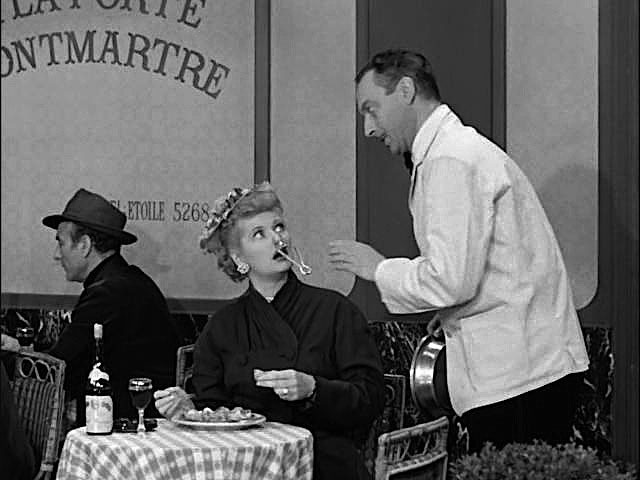 SO JUST HOLD
YOUR NOSE
SO JUST HOLD
YOUR NOSE
Researchers at UC-Berkeley say they've discovered that smelling food before eating it could cause weight gain. In Cell Metabolism, the team writes that the body’s sense of smell seems tied to its decision to store fat instead of burn it off. Three groups of mice — a regular set, a set whose sense of smell was briefly disabled, and a third set of “super-smellers” — were all fed what the authors call a high-fat “Burger King diet,” but the mice with the disabled olfactory systems barely gained any weight at all. The normal mice literally doubled in size, while the mice that couldn’t smell only put on 10 percent more weight.
LIKE SANDS THROUGH THE HOURGLASS. . .
SO ARE THE
DAYS OF OUR LIVES
“The great wave of
Vietnamese restaurants that washed across the East
Village late last year left casualties in its wake. . .
. Thankfully, like seeds scattered by the storm, others
have survived, thriving in what Eater has called a
`great new era for Vietnamese food.’”—Nicolas Niarchos,
“Pho Real,” The New
Yorker (8/7/2017)
Any of John Mariani's books below may be ordered from amazon.com.
 The
Hound in Heaven (21st Century Lion Books)
is a novella, and for anyone who loves dogs,
Christmas, romance, inspiration, even the supernatural, I
hope you'll find this to be a treasured favorite.
The story concerns how, after a New England teacher,
his wife and their two daughters adopt a stray puppy found
in their barn in northern Maine, their lives seem full of
promise. But when tragedy strikes, their wonderful dog
Lazarus and the spirit of Christmas are the only things
that may bring his master back from the edge of
despair.
The
Hound in Heaven (21st Century Lion Books)
is a novella, and for anyone who loves dogs,
Christmas, romance, inspiration, even the supernatural, I
hope you'll find this to be a treasured favorite.
The story concerns how, after a New England teacher,
his wife and their two daughters adopt a stray puppy found
in their barn in northern Maine, their lives seem full of
promise. But when tragedy strikes, their wonderful dog
Lazarus and the spirit of Christmas are the only things
that may bring his master back from the edge of
despair. WATCH THE VIDEO!
“What a huge surprise turn this story took! I was completely stunned! I truly enjoyed this book and its message.” – Actress Ali MacGraw
“He had me at Page One. The amount of heart, human insight, soul searching, and deft literary strength that John Mariani pours into this airtight novella is vertigo-inducing. Perhaps ‘wow’ would be the best comment.” – James Dalessandro, author of Bohemian Heart and 1906.
“John Mariani’s Hound in Heaven starts with a well-painted portrayal of an American family, along with the requisite dog. A surprise event flips the action of the novel and captures us for a voyage leading to a hopeful and heart-warming message. A page turning, one sitting read, it’s the perfect antidote for the winter and promotion of holiday celebration.” – Ann Pearlman, author of The Christmas Cookie Club and A Gift for my Sister.
“John Mariani’s concise, achingly beautiful novella pulls a literary rabbit out of a hat – a mash-up of the cosmic and the intimate, the tragic and the heart-warming – a Christmas tale for all ages, and all faiths. Read it to your children, read it to yourself… but read it. Early and often. Highly recommended.” – Jay Bonansinga, New York Times bestselling author of Pinkerton’s War, The Sinking of The Eastland, and The Walking Dead: The Road To Woodbury.
“Amazing things happen when you open your heart to an animal. The Hound in Heaven delivers a powerful story of healing that is forged in the spiritual relationship between a man and his best friend. The book brings a message of hope that can enrich our images of family, love, and loss.” – Dr. Barbara Royal, author of The Royal Treatment.
 |
The Encyclopedia of American Food and Drink by John F. Mariani (Bloomsbury USA, $35) Modesty forbids me to praise my own new book, but let me proudly say that it is an extensive revision of the 4th edition that appeared more than a decade ago, before locavores, molecular cuisine, modernist cuisine, the Food Network and so much more, now included. Word origins have been completely updated, as have per capita consumption and production stats. Most important, for the first time since publication in the 1980s, the book includes more than 100 biographies of Americans who have changed the way we cook, eat and drink -- from Fannie Farmer and Julia Child to Robert Mondavi and Thomas Keller. "This book is amazing! It has entries for everything from `abalone' to `zwieback,' plus more than 500 recipes for classic American dishes and drinks."--Devra First, The Boston Globe. "Much needed in any kitchen library."--Bon Appetit. |
"Eating Italian will never be the same after reading John Mariani's entertaining and savory gastronomical history of the cuisine of Italy and how it won over appetites worldwide. . . . This book is such a tasteful narrative that it will literally make you hungry for Italian food and arouse your appetite for gastronomical history."--Don Oldenburg, USA Today. "Italian
restaurants--some good, some glitzy--far
outnumber their French rivals. Many of
these establishments are zestfully described
in How Italian Food Conquered the World, an
entertaining and fact-filled chronicle by
food-and-wine correspondent John F.
Mariani."--Aram Bakshian Jr., Wall Street
Journal.
"Equal parts
history, sociology, gastronomy, and just
plain fun, How Italian Food Conquered the
World tells the captivating and delicious
story of the (let's face it) everybody's
favorite cuisine with clarity, verve and
more than one surprise."--Colman Andrews,
editorial director of The Daily
Meal.com. "A fantastic and fascinating
read, covering everything from the influence
of Venice's spice trade to the impact of
Italian immigrants in America and the
evolution of alta cucina. This book will
serve as a terrific resource to anyone
interested in the real story of Italian
food."--Mary Ann Esposito, host of PBS-TV's
Ciao
Italia. "John Mariani has written the
definitive history of how Italians won their
way into our hearts, minds, and
stomachs. It's a story of pleasure over
pomp and taste over technique."--Danny Meyer,
owner of NYC restaurants Union Square
Cafe, The Modern, and Maialino.
|
 |
 |
 |
 |
 |
 |
 |
 |
 Everett Potter's Travel Report:
Everett Potter's Travel Report: 
 Eating Las Vegas
JOHN CURTAS has been covering the Las Vegas
food and restaurant scene since 1995. He is
the co-author of EATING LAS VEGAS – The 50
Essential Restaurants (as well as
the author of the Eating Las Vegas web site: www.eatinglasvegas.
He can also be seen every Friday morning as
the “resident foodie” for Wake Up With the
Wagners on KSNV TV (NBC) Channel 3 in
Las Vegas.
Eating Las Vegas
JOHN CURTAS has been covering the Las Vegas
food and restaurant scene since 1995. He is
the co-author of EATING LAS VEGAS – The 50
Essential Restaurants (as well as
the author of the Eating Las Vegas web site: www.eatinglasvegas.
He can also be seen every Friday morning as
the “resident foodie” for Wake Up With the
Wagners on KSNV TV (NBC) Channel 3 in
Las Vegas.

MARIANI'S VIRTUAL GOURMET
NEWSLETTER is published weekly. Editor/Publisher: John
Mariani.
Editor: Walter Bagley. Contributing Writers: Christopher Mariani,
Robert Mariani, Misha Mariani, John A. Curtas, Geoff Kalish, Mort
Hochstein, and
Brian Freedman. Contributing Photographer: Galina
Dargery. Technical Advisor: Gerry McLoughlin.
To un-subscribe from this newsletter,click here.
© copyright John Mariani 2017

